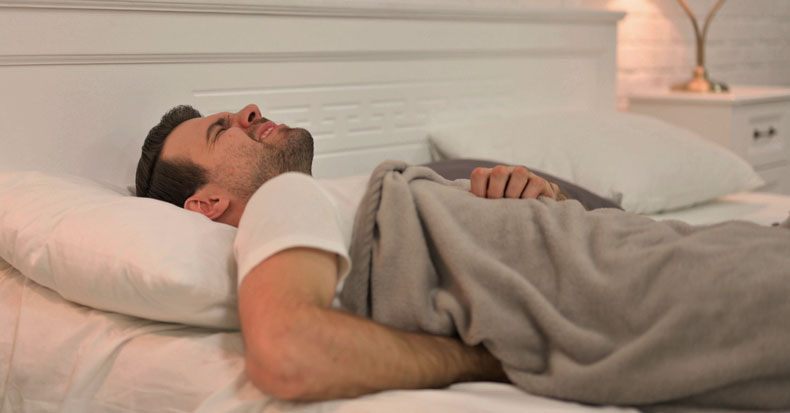Low back pain is the leading cause of disability worldwide, and it’s estimated 619 million people suffer an episode each year. By 2050, it’s expected this total will jump to 843 million! In addition to the direct and indirect effects low back pain can have on the individual patient, the overall healthcare costs and productivity losses associated with this musculoskeletal disorder add up to more than $230 billion dollars each year in just the United States! This in mind, identifying and mitigating risk factors for low back pain by even a small amount can result in large societal gains. One risk factor for low back pain that isn’t typically imagined is sleep.
Sleep is considered essential for survival. Many vital functions occur during slumber including tissue growth and repair, cytokines production to bolster the immune system, heart rate and blood pressure regulation, memory consolidation, and brain detoxification, just to name a few. If an individual suffers from insomnia, obstructive sleep apnea, circadian rhythm sleep-wake disorders, or sleep bruxism, these critical processes are impeded, which can make the body more susceptible to developing musculoskeletal pain, including low back pain.
In one study, researchers looked at health data concerning 6,285 older adults and found that an individual’s risk for low back pain increases by 13.6% for each hour less than seven hours of sleep he or she averages a night. However, any additional sleep beyond seven hours does not confer additional low back pain reduction benefits. Interestingly, this finding held true even after adjusting for age, gender, income level, education level, and occupation.
Not only can poor sleep increase the risk for low back pain, but it can stimulate changes in how pain is perceived, leading to greater pain sensitivity, which in turn results in increased disability and avoidance behaviors. One study, published in December 2020, found that older adults with moderate-to-severe sleep disturbances will likely accumulate chronic neuropsychiatric and musculoskeletal conditions at a faster rate than seniors with good sleep hygiene. To complicate matters, the American Academy of Sleep Medicine reports that 80% of American adults experience daytime sleepiness, meaning they either aren’t sleeping enough each night or the quality of their sleep is poor. So what can be done to improve sleep hygiene?
The Centers for Disease Control and Prevention (CDC) offers the following tips for better sleep: be consistent with bed times; make sure your bedroom is quiet, dark, relaxing, and kept at a comfortable temperature; remove electronic devices from the bedroom; avoid large meals, caffeine, and alcohol before going to bed; and get some exercise during the day. If low back pain is keeping you up at night, be sure to let your doctor of chiropractic know. They may be able to recommend additional strategies to improve your sleep and if necessary, co-manage your case with an allied healthcare provider.
